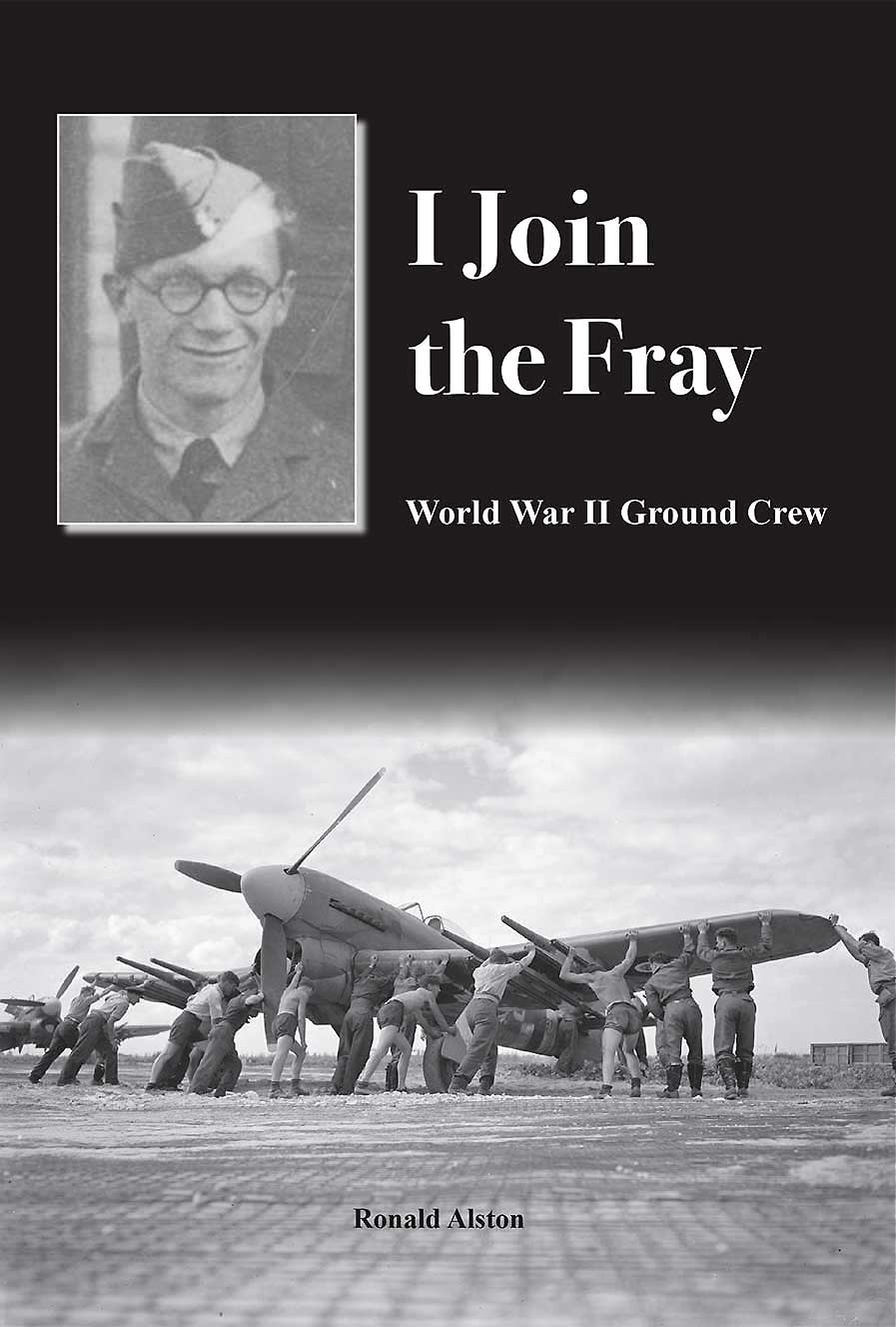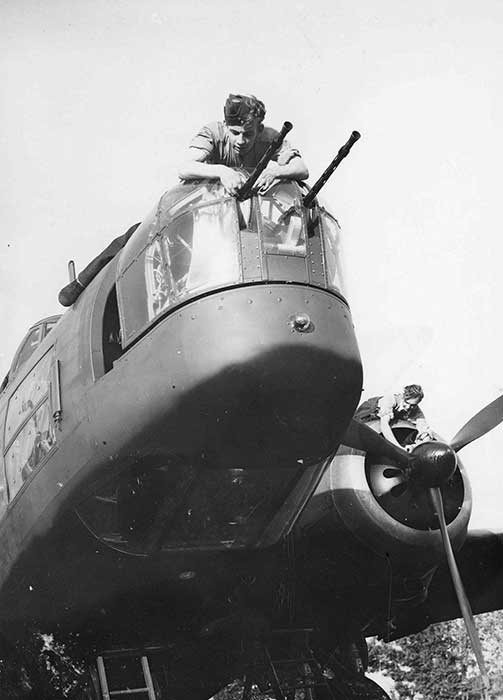World War II Ground Crew

WWII RAF Ground Crew Book By Ron Alston
WWII RAF ground crew book by Ron Alston is a book that is focused on the war time memoirs of Ronald Alston RAF ground crew during World War II. We hope you enjoy them as much as we have.
Foreword
WWII RAF ground crew book by Ron Alston gives insights into Ron’s war which are both illuminating and funny. He along with hundreds of 18 year olds arrived at the Recruitment Centre in Cardington in Bedfordshire in 1943. They were kitted out with RAF uniforms a stout pair of boots and a greatcoat which Ron said was a godsend in freezing cold Nissan hut accommodation.
The group’s first posting was to Skegness in Lincolnshire. Their excitement turned to despair as there was not an aircraft in sight. Ron describes his time there as most bewildering. They were there on a course on “How to protect our airfields from the enemy”. They were up at 7:30 in the morning sent on a long march followed by drill. The manoeuvres were exhausting and sometimes dangerous; they went through streams, climbed up walls, learned to throw hand grenades and even charging with bayonets, meanwhile having to shout all the time to frighten the enemy. Then down at the end of the pier in Skegness they fired live rounds of bullets into the sea.

Call Up
So far my Air Force career had involved me in activities far removed from the operation of aircraft and well removed from any actual combat. Like my companions my first taste of Air Force life was obtained on our basic training. This could involve us occasionally in something hazardous but nothing really life threatening if the situation was handled sensibly. Thinking back to those first days I now realise that it was our instructors who at times faced greatest risks than we did. Luckily for us all, they seemed capable of dealing with any challenge we inadvertently posed for them.
There were moments when one could not help wondering “why on earth am I doing this?” The answer to that was simple. We had all just been called up to the Royal Air Force and they thought it would be very good for us to do all these strange activities. Should we still doubt it, our instructor had graphic ways of explaining to us that things would be far more hazardous, painful and unpleasant if we failed to do the next jolly little task. Some seemed incapable of grasping simple facts, so carefully explained to us, such as the undoubted benefits of hurling a live hand grenade as far away from one as possible. To hurl it straight up in the air so that it came down at the throwers feet was not something to be encouraged. One would have no problems, in those trying times, if someone decided that he would prefer to blow himself up. However, the bystanders, forced to be there, were entitled to raise serious objections and express valid concerns at the prospect of being blown up with him, not for any failings on their part, but due entirely to the idiotic incompetence of others. Our basic three weeks “square bashing” and five weeks “battle training” provided a range of skills and understanding which I am convinced extended far beyond anything that the Air Ministry, in their wisdom, had ever expected or intended. Whether these newly acquired accomplishments would contribute in any way to our winning a vicious war is an altogether different question. I have a view but prefer to keep it to myself.
At the end of our eight bewildering, and often terrifying, weeks of training our little group of about twenty souls was scattered far and wide among a variety of RAF Stations. I found myself despatched to the leafy delights of Middle England at a Maintenance Unit at Didcot. Wartime names can be misleading. We did not actually maintain anything. We loaded and unloaded a range of bits and pieces stored in a Depot in large sheds. The stored items were sent out, when required, to Units and people who actually did do maintenance. Click here for more »

